Table of Contents
Chokecherry pudding is a traditional dish made from the tart yet nutritious chokecherry fruit. This deep purple pudding has been cherished for generations, particularly among Indigenous communities, who have long recognized the health benefits of chokecherries. But what is chokecherry pudding exactly? It’s a rich, flavorful dish made by cooking chokecherry juice with natural thickeners like flour or cornstarch, resulting in a smooth, slightly tart dessert.
Beyond its delightful taste, chokecherry pudding and cancer prevention have been linked due to the fruit’s high antioxidant content. Modern studies suggest that chokecherries may contain cancer-fighting compounds, making this pudding more than just a sweet treat. Whether you’re looking for a chokecherry pudding recipe or wondering where to buy chokecherry pudding, this article will cover everything you need to know—from its history and health benefits to how to make chokecherry pudding at home.
Health Benefits and Cancer Prevention
Chokecherries are packed with powerful antioxidants, making them a superfood with multiple health benefits. This small but potent fruit is rich in anthocyanins, flavonoids, and vitamin C, all of which contribute to overall wellness. The high antioxidant content in chokecherries plays a crucial role in reducing oxidative stress and inflammation, which are linked to chronic diseases like heart disease and cancer.
Chokecherry Pudding and Cancer Prevention
Recent studies suggest a potential connection between chokecherry pudding and cancer prevention. Anthocyanins, the pigments responsible for the deep color of chokecherries, have been shown to combat free radicals in the body, reducing the risk of cell mutations that can lead to cancer. Some research indicates that regular consumption of antioxidant-rich foods, such as traditional chokecherry pudding, may help lower the risk of certain cancers, including colon and breast cancer.
Additional Health Benefits
Besides cancer prevention, chokecherries offer several other health benefits:
- Boosting Immunity – Their high vitamin C content helps strengthen the immune system.
- Supporting Digestive Health – Chokecherries contain natural fiber that aids in digestion.
- Heart Health – The flavonoids in chokecherries help improve blood circulation and reduce bad cholesterol levels.
By incorporating chokecherry recipes into your diet, such as chokecherry pudding, jams, and even chokecherry cake, you can enjoy both the health benefits and delicious flavors of this unique fruit.
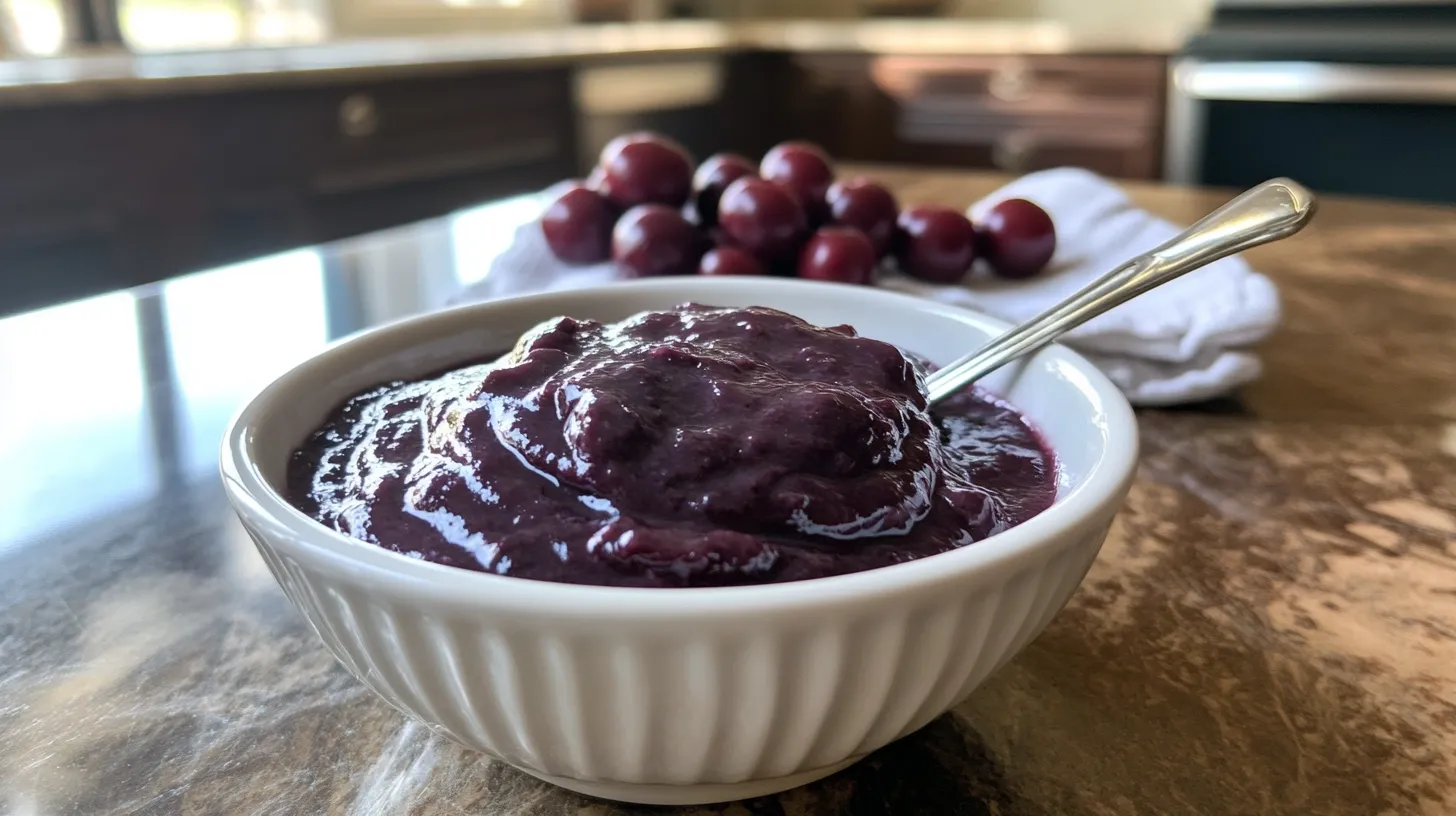
Traditional Chokecherry Pudding Recipe
Chokecherry pudding has deep roots in Indigenous and early American cuisine. Historically, Native American tribes used chokecherries in a variety of dishes, including traditional chokecherry pudding, due to their nutritional value and long shelf life when dried. This pudding was often prepared as a staple food during the colder months, offering both sustenance and medicinal benefits.
Origins and Traditional Preparation
The traditional method of making chokecherry pudding involved crushing the whole chokecherries—pits and all—to extract their natural juices. The juice was then simmered over a fire and thickened with finely ground chokecherry meal or natural thickeners like cornmeal or flour. This process resulted in a thick, slightly tart pudding that was enjoyed as both a dessert and a nutrient-rich dish.
Key Ingredients in Traditional Chokecherry Pudding
While modern variations exist, the authentic chokecherry pudding recipe consists of:
- Fresh or dried chokecherries
- Water (to extract the juice)
- Natural thickeners (such as flour or cornstarch)
- Sweeteners (traditionally honey or maple syrup)
Cultural Significance
For many Indigenous communities, chokecherry recipes are more than just food—they represent a connection to their heritage. Passed down through generations, these recipes reflect the sustainable use of natural ingredients and the deep respect for nature’s gifts.
How to Make Chokecherry Pudding at Home
Making chokecherry pudding at home is a rewarding experience that allows you to enjoy the rich, tangy flavor of this traditional dish. Whether you’re following an old-fashioned method or a modern variation, the process is straightforward and requires just a few essential ingredients.
Step-by-Step Guide to Making Chokecherry Pudding
To prepare chokecherry pudding, you’ll need to start with fresh, dried, or frozen chokecherries. The primary steps involve:
- Extracting the Juice – Simmer the chokecherries in water until they release their deep purple juice. Strain out the solids to remove the pits.
- Thickening the Mixture – Slowly add a thickening agent such as flour, cornstarch, or ground chokecherry meal while stirring constantly to avoid lumps.
- Sweetening to Taste – Depending on your preference, add natural sweeteners like honey, maple syrup, or sugar to balance the tartness.
- Cooking to Perfection – Continue cooking over low heat until the mixture reaches a smooth, pudding-like consistency.
Tips for the Best Chokecherry Pudding
- Use Ripe Chokecherries – The riper the berries, the deeper the flavor.
- Adjust Sweetness – Since chokecherries are naturally tart, experiment with different sweeteners to suit your taste.
- Enhance Flavor – Some modern recipes include cinnamon or vanilla for an extra depth of taste.
Common Mistakes to Avoid
- Skipping the Straining Process – Chokecherry pits can be toxic if consumed in large amounts. Always strain the juice thoroughly.
- Overcooking the Pudding – Cooking for too long can result in a texture that is too thick or gelatinous.
By mastering how to make chokecherry pudding, you can enjoy this dish as a nostalgic treat or a nutritious addition to your diet.
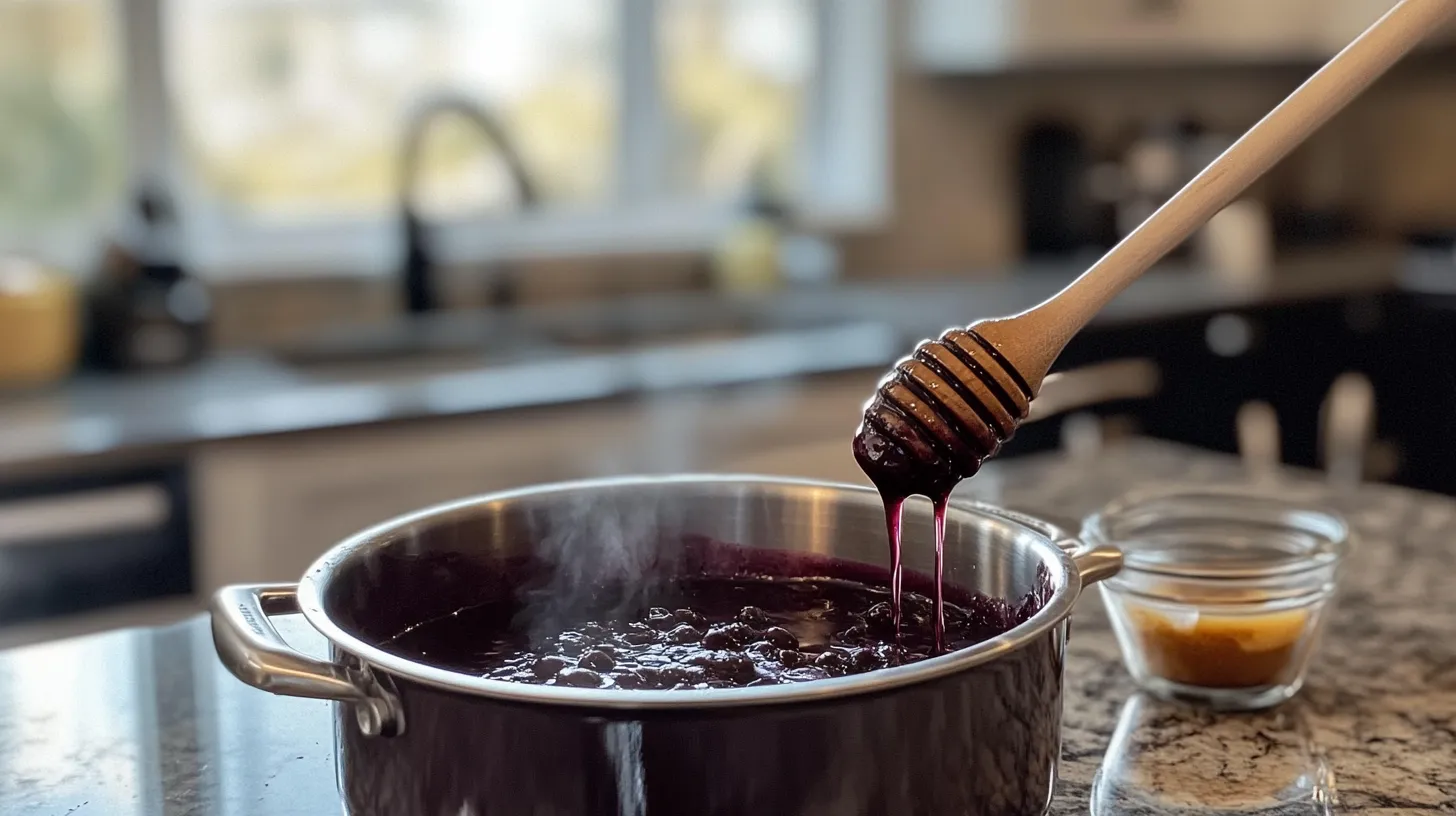
Where to Buy Chokecherry Pudding and Ingredients
If you don’t have access to fresh chokecherries or prefer a ready-made option, there are several ways to purchase chokecherry pudding and its essential ingredients. Whether you’re looking for whole chokecherries, pre-made pudding, or processed juice, both online and local sources can provide what you need.
Online Sources for Chokecherry Pudding and Ingredients
Several specialty stores and online marketplaces sell chokecherry products, including:
- Amazon & eBay – Dried chokecherries, chokecherry syrup, and preserves.
- Specialty Food Retailers – Websites like Native Harvest, Wild Foods, and regional farms often sell organic chokecherry products.
- Local Farmers & Markets – Some regional farms and Indigenous-owned businesses offer fresh chokecherries seasonally.
Best Places to Buy Fresh Chokecherries
- Farmer’s Markets – If you live in the Northern U.S. or Canada, local markets may carry fresh chokecherries in late summer.
- Co-ops and Health Food Stores – Some natural food stores stock frozen or dried chokecherries.
- Foraging – If you live in an area where chokecherries grow wild, responsible foraging is a great option.
What to Look for When Buying
- Freshness – Look for deep, dark red-to-purple chokecherries, avoiding green or unripe ones.
- Organic Certification – If possible, opt for organic or pesticide-free options.
- High-Quality Pudding – Pre-made chokecherry pudding should have minimal preservatives and natural ingredients.
Whether you prefer to make traditional chokecherry pudding from scratch or buy a ready-made version, there are plenty of options available to suit your needs.
Other Chokecherry Desserts and Culinary Uses
Chokecherries are incredibly versatile and can be used in a variety of delicious recipes beyond chokecherry pudding. Their bold, tart flavor makes them an excellent ingredient for both sweet and savory dishes. If you’re looking for creative ways to use chokecherries in your cooking, here are some of the best options.
1. Chokecherry Cake
One of the most popular desserts made with chokecherries is chokecherry cake. The natural tartness of the berries balances perfectly with the sweetness of the cake, creating a moist and flavorful treat. Some variations include:
- Chokecherry Coffee Cake – A light, crumbly cake with a cinnamon streusel topping.
- Chokecherry Pound Cake – A rich, buttery cake infused with chokecherry juice for extra flavor.
- Gluten-Free Chokecherry Cake – Made with almond flour and natural sweeteners for a healthier twist.
2. Chokecherry Jams, Jellies, and Syrups
If you love preserving fruits, chokecherries make excellent jams and jellies. Chokecherry syrup is another popular option, often used as a topping for pancakes, waffles, or even drizzled over ice cream. These preserves can be stored for months and provide a great way to enjoy chokecherries year-round.
3. Chokecherry Beverages
Beyond food, chokecherries are commonly used in drinks:
- Chokecherry Wine – A homemade fruit wine with a bold and slightly tangy profile.
- Chokecherry Juice – A refreshing drink loaded with antioxidants.
- Chokecherry Tea – Often used in herbal remedies for its potential health benefits.
4. Savory Uses for Chokecherries
While chokecherries are commonly used in desserts, they also complement savory dishes. Some chefs use them in:
- Chokecherry Sauce for Meats – A tangy, slightly sweet sauce that pairs well with wild game like venison or duck.
- Chokecherry Reduction – A concentrated sauce often drizzled over roasted vegetables or cheeses.
By exploring different chokecherry recipes, you can enjoy the fruit in a variety of ways beyond pudding. From cakes and jams to unique beverages and sauces, chokecherries offer a world of culinary possibilities.
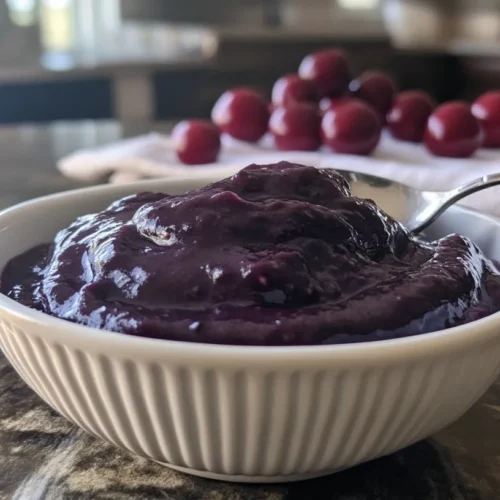
Chokecherry Pudding Recipe
Equipment
- Medium Saucepan
- Fine mesh strainer or cheesecloth
- Mixing bowl
- Whisk
- Wooden spoon
- Serving bowls
Ingredients
- 2 cups chokecherries washed
- 2 cups water
- 1/2 cup sugar
- 1/4 cup flour or cornstarch for a smoother texture
- 1/4 tsp salt
- 1/2 tsp vanilla extract optional
Instructions
Cook the Chokecherries to Extract Juice
- Place the chokecherries in a medium saucepan with 2 cups of water. Bring to a boil over medium heat, then reduce to a simmer. Allow the berries to cook for 15 minutes, stirring occasionally, until they soften and burst, releasing their juices.

Strain the Juice for a Smooth Pudding
- Remove the saucepan from the heat. Use a fine mesh strainer or cheesecloth to separate the liquid from the berry pulp and seeds. Press down on the berries with a spoon to extract as much juice as possible. You should get about 1½ to 2 cups of liquid. Discard the solids.

Sweeten and Prepare the Thickener
- Return the strained chokecherry juice to the saucepan and add the sugar and salt, stirring until dissolved. In a small bowl, mix the cornstarch with ½ cup of cold water to create a smooth slurry. This step prevents lumps in your pudding.

Thicken the Pudding Mixture
- Bring the sweetened chokecherry juice to a gentle simmer over low heat. Slowly pour in the cornstarch slurry while whisking continuously. Stir constantly for 5-7 minutes until the pudding thickens to a smooth, velvety consistency. It should coat the back of a spoon when ready.

Add Flavor and Serve
- Remove the pudding from heat and stir in vanilla extract for added depth of flavor. Pour the pudding into serving bowls and let it cool slightly. Serve warm or refrigerate for a chilled, firmer pudding.

Video
Notes
- Store in an airtight container in the refrigerator for up to 3 days.
- For a thicker pudding, reduce the water slightly or add 1 extra tablespoon of cornstarch.
- Serve with whipped cream, shortbread cookies, or a sprinkle of cinnamon for extra flavor.
- You can replace sugar with honey or maple syrup for a natural sweetener alternative.
Frequently Asked Questions (FAQ)
What is chokecherry pudding?
Chokecherry pudding is a traditional dessert made from the juice of chokecherries, thickened with flour or cornstarch and sweetened to balance the natural tartness of the fruit. It has deep cultural roots, especially among Indigenous communities, and is enjoyed for its unique flavor and nutritional benefits.
Where can I buy chokecherry pudding or its ingredients?
Chokecherry pudding and its ingredients can be found in specialty food stores, online marketplaces like Amazon and eBay, and local farmers’ markets. Some Indigenous-owned businesses and regional farms also sell fresh, dried, or frozen chokecherries.
Is chokecherry pudding good for health?
Yes, chokecherry pudding is rich in antioxidants, particularly anthocyanins, which help reduce inflammation and may lower the risk of certain diseases, including cancer. The fruit also contains fiber, vitamins, and minerals that support digestion and overall health.
Can I make chokecherry pudding with other ingredients?
Yes, while the traditional recipe uses chokecherry juice and natural thickeners, modern variations allow for ingredient substitutions. You can use honey or maple syrup instead of sugar, add spices like cinnamon or vanilla for extra flavor, or use alternative thickeners such as arrowroot powder for a gluten-free version.
Conclusion
Chokecherry pudding is a flavorful, nutrient-rich dessert with deep cultural roots. Packed with antioxidants, it offers potential health benefits, including inflammation reduction and possible cancer prevention. Whether making a traditional chokecherry pudding recipe at home or buying it from specialty stores, this dish remains a timeless favorite.
Beyond pudding, chokecherries can be used in cakes, jams, and sauces, making them a versatile ingredient. Whether for tradition, health, or taste, chokecherry pudding is a delightful way to enjoy this unique fruit.


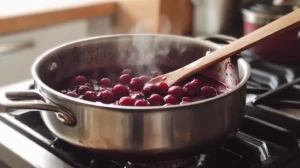
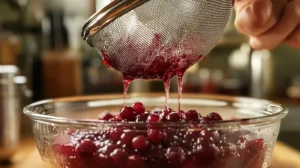
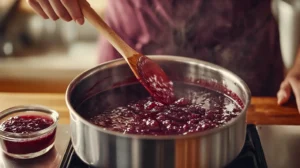
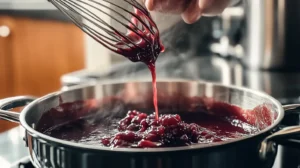
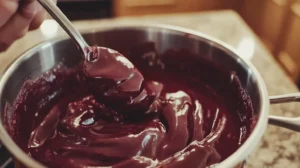
Delicious and easy to make! Loved it!